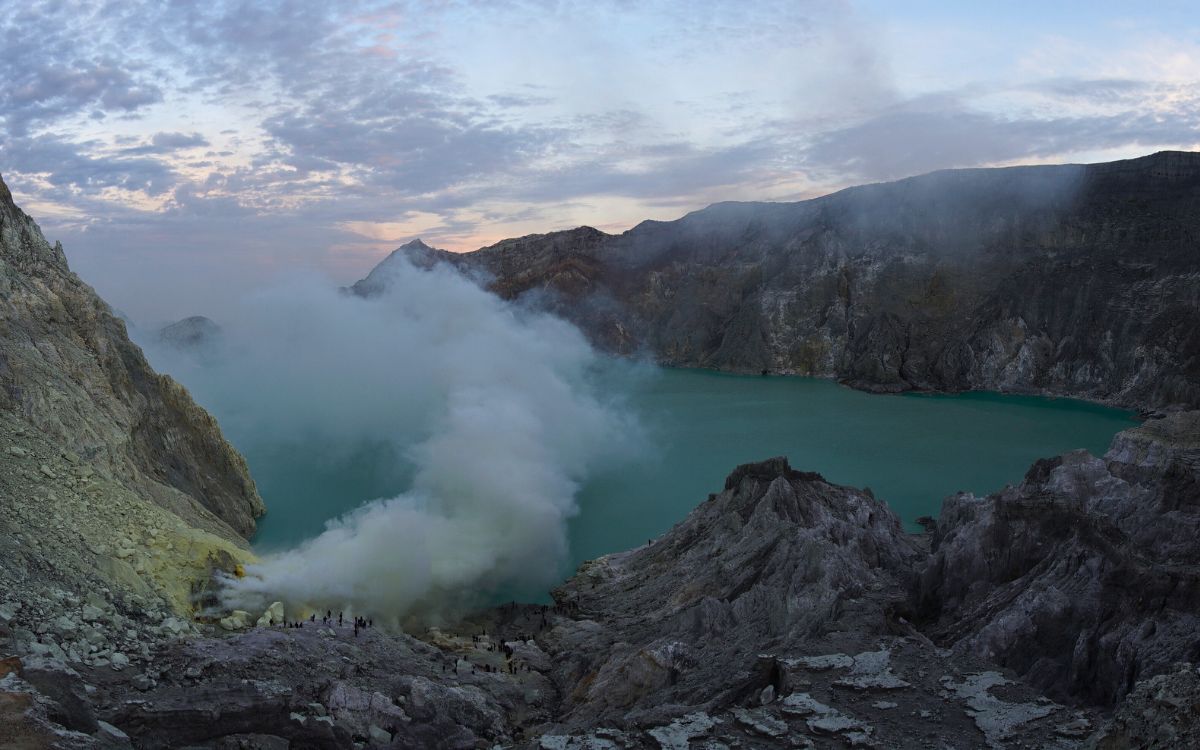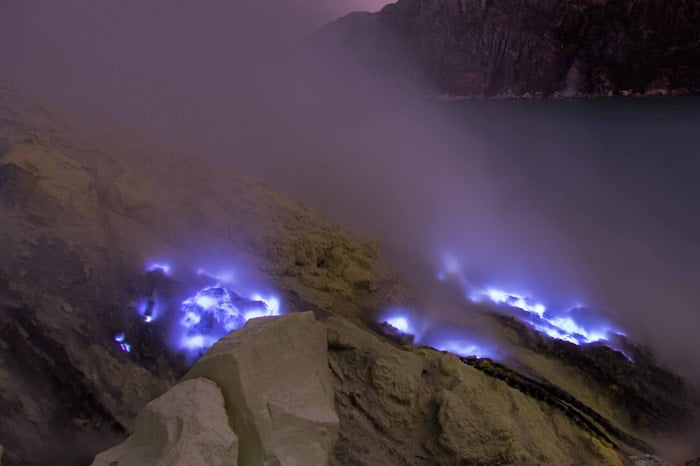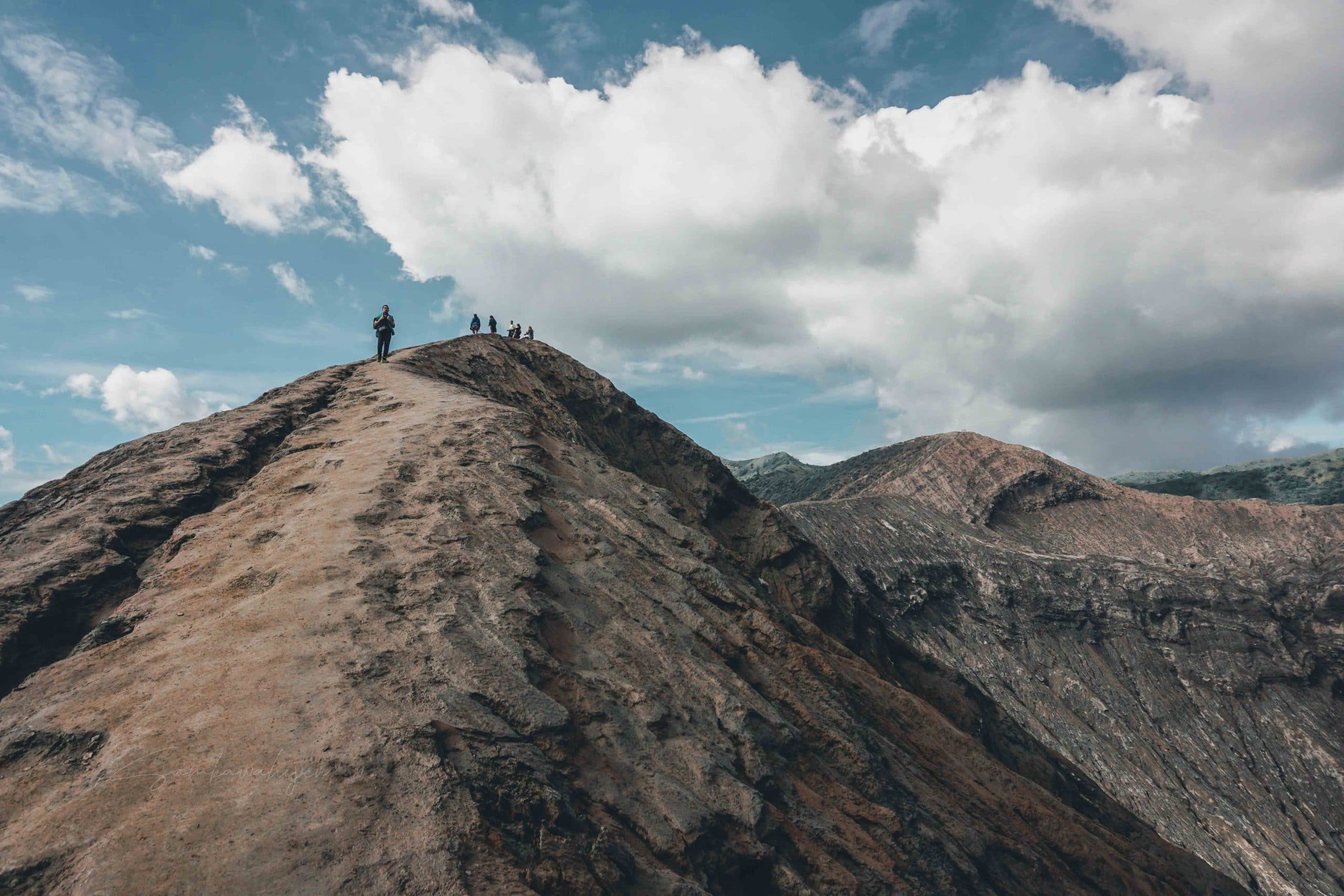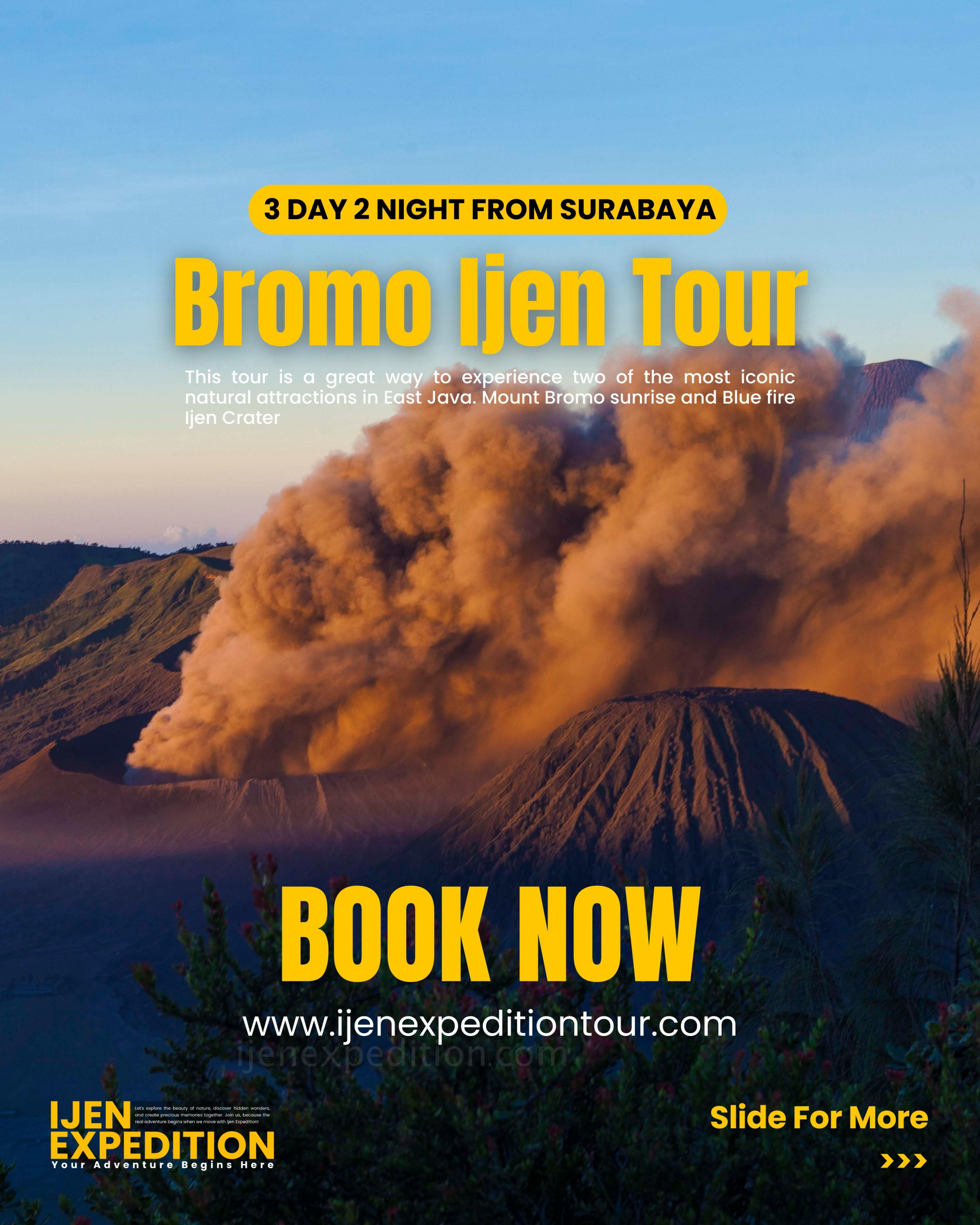Overview
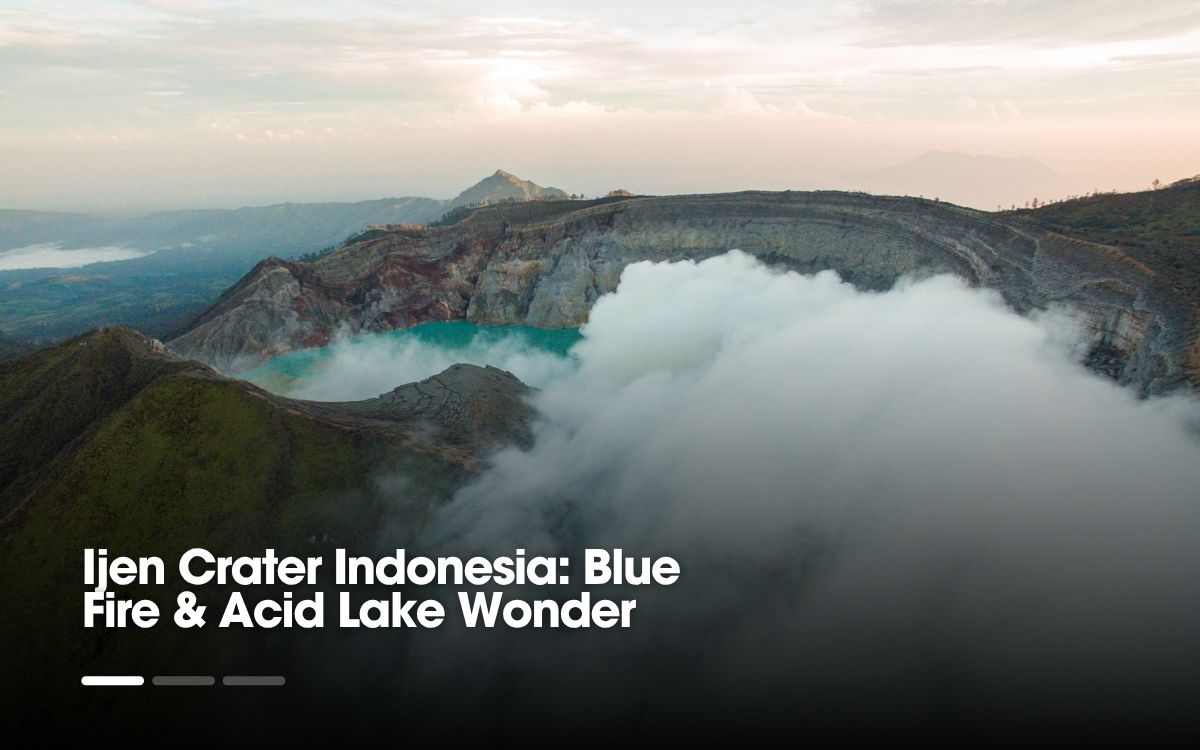
Imagine standing on the edge of a volcanic crater in the dead of night. The stars shimmer above, the cold mountain air fills your lungs, and ahead of you, an eerie electric-blue flame dances across the rocky ground. This mesmerising light, born from ignited sulfuric gases, burns brightly against the pitch-black sky. As dawn breaks, the darkness gives way to another marvel—a glowing, turquoise lake hidden within the crater, radiating beauty and danger in equal measure.
This is Ijen Crater, or Kawah Ijen, located in the far eastern corner of Java, Indonesia. A place where the Earth breathes fire and water, Ijen draws thousands of visitors each year who come in search of raw, untouched natural beauty. Its surreal landscape is unlike anywhere else in the world.
What makes Ijen truly special are its rare geological phenomena. It is one of only a few places on Earth where blue fire can be witnessed, caused by the combustion of sulfuric gas at high temperatures. At the heart of the crater lies the largest acidic lake on the planet, a stunning body of water whose bright turquoise hue belies its extreme acidity. Together, these elements create a scene that is both magical and otherworldly—a true natural wonder that has captivated the hearts of travellers, scientists, and photographers alike.
Where is Ijen Crater Located?
Ijen Crater is situated in East Java, Indonesia, within the Ijen Plateau, a remote highland region shared by the Banyuwangi and Bondowoso regencies. Nestled in the Taman Wisata Alam Kawah Ijen (Ijen Nature Reserve Park), this iconic volcanic site lies within a complex of stratovolcanoes known as the Ijen Volcano Complex.
The crater itself sits at an altitude of about 2,386 meters (7,828 feet) above sea level, offering sweeping views of the surrounding mountains and forests. Despite its remote location, Ijen is accessible from several key transit points in Java and Bali.
How to Get to Ijen Crater
- From Banyuwangi (closest city): The most common gateway to Ijen, located just 30–40 km away. Travellers can reach Banyuwangi by train, flight, or ferry from Bali.
- From Surabaya: Indonesia’s second-largest city and a major transportation hub, located about 6–7 hours by car or train.
- From Bali: A popular route for international travellers. You can cross by ferry from Gilimanuk (Bali) to Ketapang (Java), then continue by car to Ijen.
- From Yogyakarta or Malang: Possible with longer overland travel or combined tour packages.
Most visitors begin the midnight hike to Ijen from the Paltuding Basecamp, which is the official entrance to the national park. It’s also where hikers register and rent gas masks before beginning the 3-km trek to the crater rim.
Though getting there may require some planning, the journey is well worth it. The route passes through lush forests, coffee plantations, and scenic mountain roads—setting the tone for an unforgettable volcanic adventure.
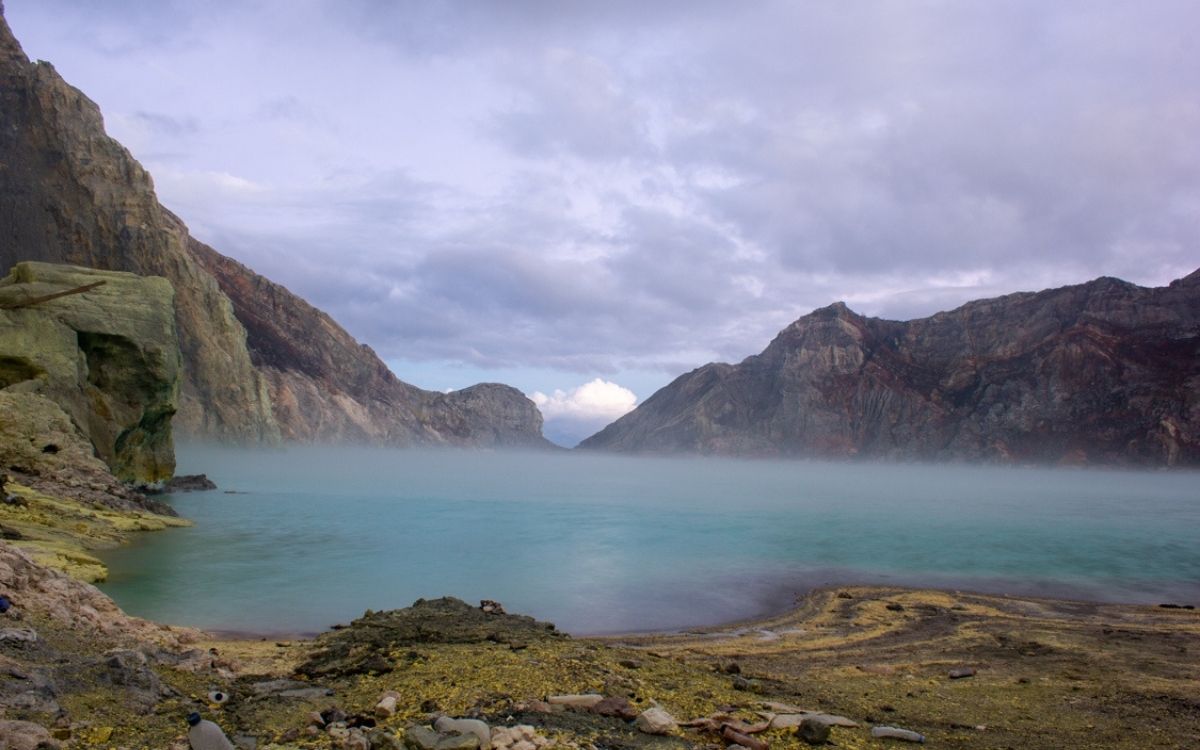
The Blue Fire Phenomenon
One of the most extraordinary sights on Earth, the blue fire of Ijen Crater has become its most iconic attraction. Unlike lava, which glows red or orange, this rare natural phenomenon emits an intense electric-blue flame that appears to dance and flicker along the rocky crater floor.
What Is Blue Fire?
The blue fire is not blue lava. Instead, it’s the result of sulfuric gases that escape through cracks in the volcano at high pressure and temperatures exceeding 600°C (1,112°F). When these gases come into contact with the air, they ignite and produce a blue flame—a phenomenon only visible in total darkness. The flames can reach up to 5 meters (16 feet) high and can sometimes look like rivers of glowing light flowing down the crater walls.
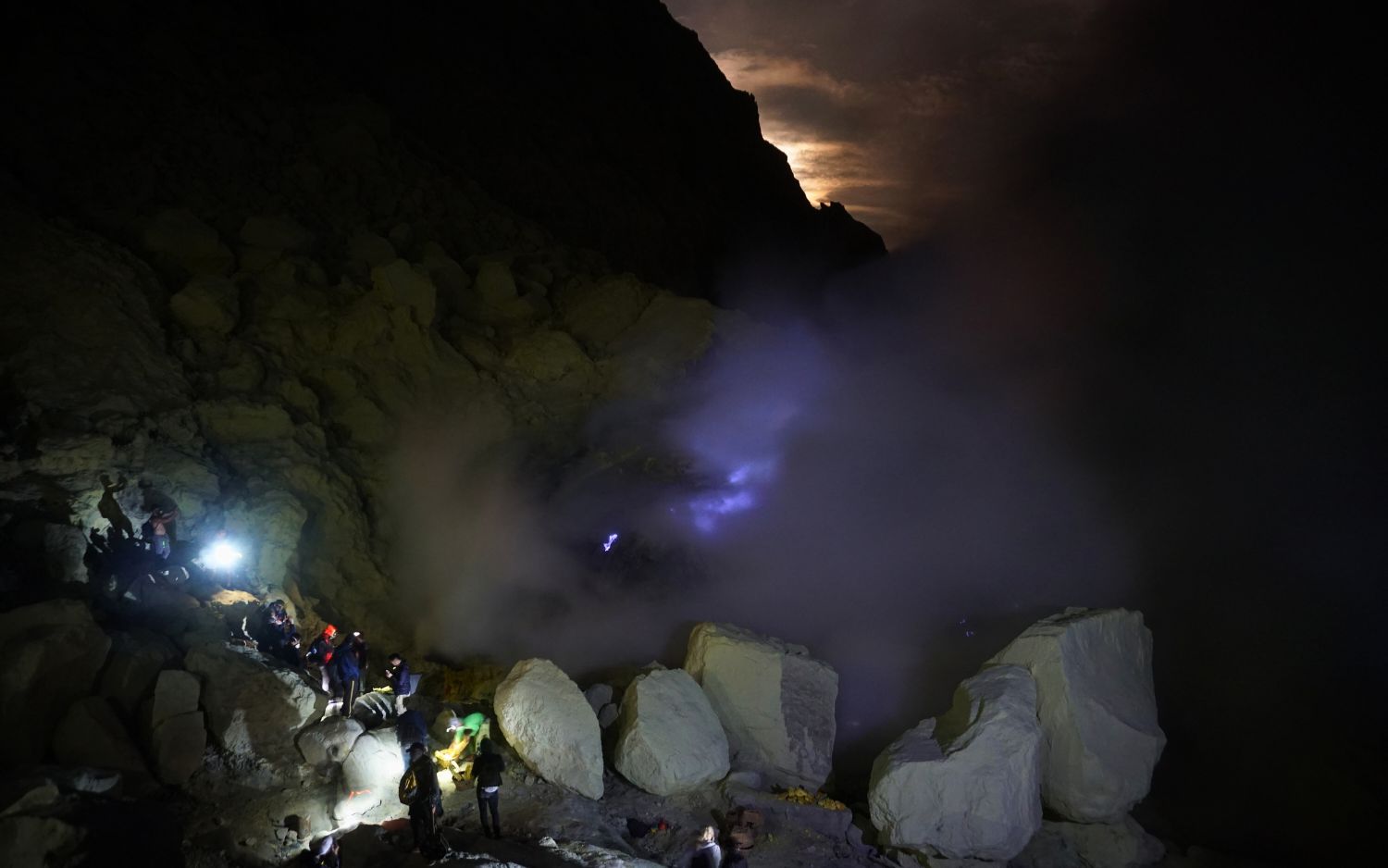
Where Else Can Blue Fire Be Found?
This surreal phenomenon—blue fire—exists in a few places on Earth, but Kawah Ijen in Indonesia is the only place where it can be seen up close and reliably by travellers, making it the most iconic blue fire destination on the planet.”
Or a simpler version:
“While blue fire can occur in a few locations globally, Kawah Ijen in Indonesia is the only place where travellers can witness it safely and consistently, making it truly one of a kind.
When and How to See the Blue Fire
- Best Time: The blue fire is only visible at night, typically from 1:00 AM to 4:00 AM.
- Start the Hike Early: Most treks begin around midnight, allowing hikers to reach the crater by the optimal viewing time.
- Bring a Gas Mask: The sulfuric fumes can be overwhelming and even harmful without protection.
- Flashlights or Headlamps: Essential for a dark hike and navigating rocky terrain safely.
A Rare and Fragile Phenomenon
Due to its uniqueness, the blue fire of Ijen has drawn the attention of scientists, filmmakers, and photographers around the world. However, it’s also a delicate and dangerous environment. Visitors must stay on designated paths, avoid getting too close to the flames, and follow the guidance of experienced local guides.
Experiencing the blue fire up close is like stepping into a science fiction scene—an unforgettable encounter with one of nature’s most mysterious forces.
Ijen Blue Fire Tour
The Acidic Crater Lake
As the blue flames fade with the rising sun, a new spectacle emerges—the stunning, almost surreal beauty of Ijen’s acidic crater lake. This vast body of water, shimmering in brilliant shades of turquoise and emerald, lies at the heart of the crater, cradled by steep, rugged cliffs. Its peaceful appearance hides a volatile nature, making it one of the most unusual and dangerous lakes in the world.
The World’s Largest Acidic Lake
The lake at Ijen Crater is officially recognized as the largest highly acidic crater lake on Earth. Its water has a pH close to 0.3, comparable to battery acid. The vibrant colour comes from its high sulfur and hydrochloric acid content, which interacts with sunlight to create the glowing, almost magical hue.
Despite its acidic nature, the lake is a major draw for geologists, photographers, and tourists alike. The contrast between the milky-blue water and the black, sulfur-stained crater walls is both mesmerizing and photogenic—a rare scene found only in a few volcanic regions worldwide.
Living and Working on the Edge
Perhaps what’s most remarkable is the presence of local sulfur miners who work in this extreme environment every day. These brave men descend into the crater, often without modern protective equipment, to extract chunks of pure sulfur from vents near the lake. They then carry loads of up to 70–90 kg (150–200 lbs) back up the crater and down the mountain—a backbreaking job fueled by tradition and necessity.
Travelers often cross paths with these miners during their descent into the crater. Many tourists choose to support them by offering small donations or buying handmade sulfur souvenirs at the trailhead.
Nature’s Paradox
The Ijen crater lake is a symbol of nature’s paradoxical beauty—simultaneously breathtaking and hostile. It represents the raw power of Earth’s geology, where volcanic forces give rise to something visually spectacular, yet dangerously uninhabitable.
For those who make the trek, witnessing the lake at sunrise is a reward like no other. The early light bouncing off the misty surface creates a dreamlike landscape, leaving a lasting impression on every visitor.
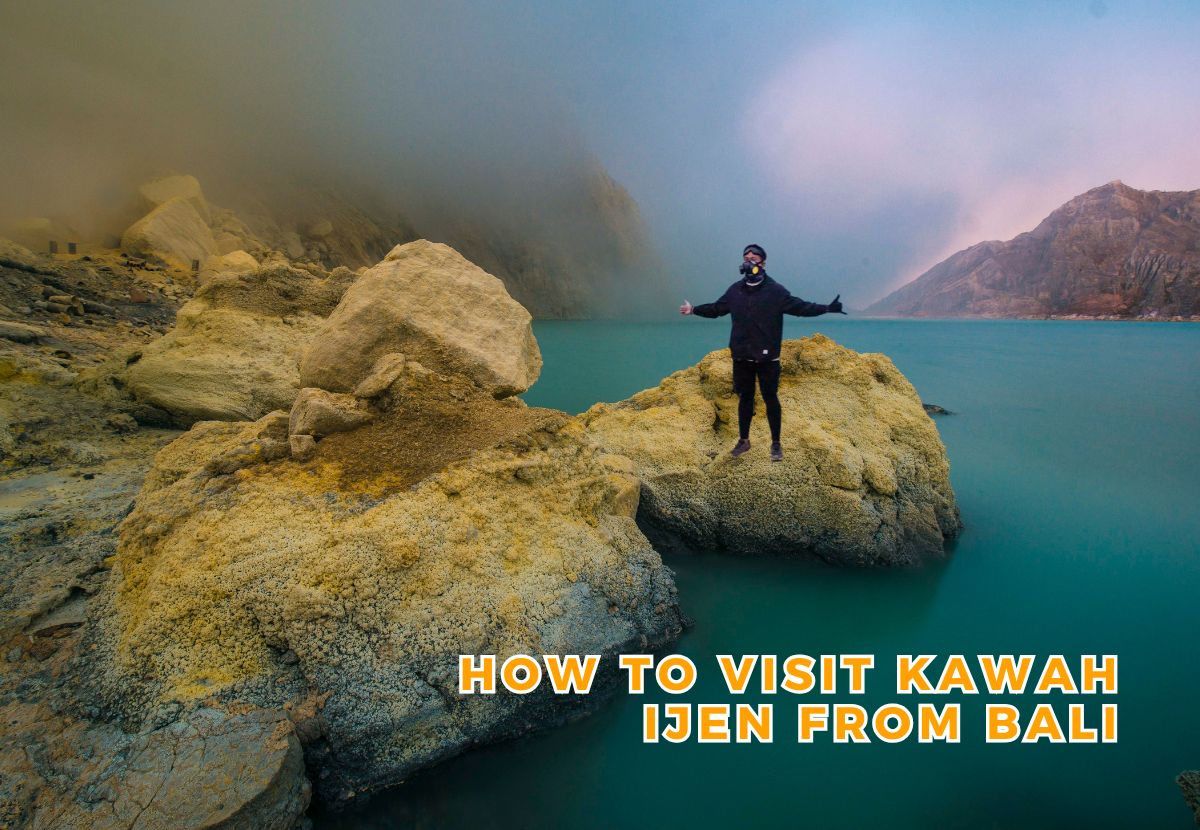
Hiking to Ijen Crater
Reaching the wonders of Ijen Crater isn’t just about the destination—it’s also about the adventure of getting there. The hike to the crater is a journey through darkness, mist, and sulfuric air, culminating in one of the most unforgettable views in Southeast Asia. Whether you’re an experienced trekker or a curious traveller, the climb offers a rewarding and surreal experience.
The Trekking Route
The hike begins at Paltuding Basecamp, the official entrance to Ijen Crater, located at around 1,850 meters (6,070 feet) above sea level. From here, the trail climbs approximately 3 kilometres (1.8 miles) to the crater rim, with a total elevation gain of about 500 meters (1,640 feet).
- Trail Type: Gravel and volcanic ash path, moderate incline.
- Hiking Time: 1.5 to 2.5 hours on average, depending on fitness level.
- Start Time: Most hikers begin around 12:30 AM to reach the crater by 2:30–3:00 AM in time to witness the blue fire.
Once at the top, hikers can descend 300 meters down a steep, rocky path into the crater itself to get close to the blue fire and sulfur vents. This descent is optional but provides the most immersive experience. Caution is required, as the path can be slippery, narrow, and heavily affected by sulfur smoke.
Is the Hike Difficult?
While the hike isn’t technically difficult, it does require a moderate level of fitness, especially due to:
- The altitude
- Cold temperatures (can drop below 10°C/50°F at night)
- Volcanic fumes and thin air near the crater
However, many first-time hikers complete the trek successfully, especially with the help of local guides who offer assistance, safety equipment, and insight into the area’s geology and culture.
What to Bring
- Gas mask (can be rented at the basecamp)
- Headlamp or flashlight
- Warm clothing (layers recommended)
- Hiking shoes with good grip
- Water and snacks
- Camera (but be cautious near the gas vents)
Guided Tours vs. Independent Trek
While solo treks are allowed, most visitors choose to join guided tours that include transportation, equipment and experienced local guides. This not only enhances safety but also ensures you don’t miss key moments like the best time to view the blue fire or sunrise.
For many, the hike to Ijen Crater is more than a physical challenge—it’s a spiritual and sensory journey, full of anticipation, wonder, and awe. Every step through the darkness brings you closer to the light—both literally and metaphorically.
Ijen Crater in Local Culture
Beyond its geological marvels, Ijen Crater holds deep cultural and social significance for the local communities who live around it. For generations, it has shaped not only the land but also the lives, beliefs, and traditions of the people of East Java. Visiting Ijen offers travellers a chance to connect with a living culture of resilience, spirituality, and hard work.
The Sulfur Miners: Guardians of the Crater
One of the most iconic aspects of Ijen is the presence of traditional sulfur miners, known locally as penambang belerang. These miners have worked in the crater for decades, using simple tools to extract pure sulfur from the vents near the acidic lake. Each day, they carry baskets filled with 70–90 kg (150–200 lbs) of sulfur up the steep crater wall and down the mountain—often without proper protection or modern equipment.
Their labour-intensive work is a testament to human endurance and adaptation. Despite the dangers—sulfur fumes, acidic terrain, and physical strain—they continue this work as a primary source of income for their families. Many travellers are deeply moved by their strength and humility, and some choose to support them by offering tips or buying handcrafted sulfur souvenirs.
Spiritual Significance
For local communities, Ijen is not just a mountain; it’s a sacred place. Many believe the crater and lake hold spiritual power, and it’s common for locals to treat the area with reverence. Some Javanese traditions involve offering prayers to the spirits of the mountain, especially before entering or working in the crater.
There are also stories passed down through generations about the “spirit guardians” of Ijen—beings believed to inhabit the volcano and protect or punish those who disrespect the land. These beliefs foster a deep respect for nature and a code of conduct that discourages wastefulness, arrogance, or carelessness while visiting the crater.
The Role of Local Guides and Porters
Many of the miners or locals now serve as licensed guides and porters, helping travellers hike safely to the crater and understand its natural and cultural significance. These guides share stories, point out hidden sulfur vents, and explain the science and folklore behind the Blue Fire. Supporting these local guides directly benefits the communities that have long protected and maintained access to the mountain.
Cultural Exchange and Respect
For visitors, understanding the human element of Ijen deepens the experience. It’s not just a trek to a volcano—it’s a chance to learn about a way of life shaped by fire, stone, and spirit. As tourism grows, it’s vital to approach Ijen with respect, curiosity, and humility, ensuring that both its natural and cultural heritage are preserved for future generations.
Best Time to Visit Ijen Crater
Planning your trip at the right time can make all the difference when visiting Ijen Crater. Weather, visibility, and crowd size vary throughout the year, and understanding these factors will help you enjoy the blue fire, sunrise, and crater lake at their most stunning.
Dry Season: The Best Time to Go
The ideal time to visit Ijen Crater is during the dry season, which runs from May to October. During these months, weather conditions are more stable, with clear skies and minimal rainfall, allowing for:
- Better visibility of the blue fire at night.
- A clear view of the sunrise over the volcano complex.
- Easier and safer hiking conditions (less mud and slippery trails).
These months also offer better photography conditions, especially in the early morning when the rising sun lights up the crater lake in brilliant shades of blue and green.
Wet Season: November to April
The rainy season brings heavier rainfall, mist, and cloud cover, which can:
- Obstruct views of the blue fire and sunrise.
- Make the trails more difficult and slippery.
- Increase the likelihood of sudden weather changes.
While Ijen is open year-round, visits during this season require more flexibility and caution. Some tour operators may cancel hikes during heavy rain or poor visibility for safety reasons.
Best Time of Day
- Midnight to early morning (12:00 AM – 4:00 AM): Best time to see the blue fire.
- 4:30 AM – 6:00 AM: Ideal time to witness the sunrise over the crater.
- After 6:00 AM: As daylight increases, visitors get the best view of the acidic lake and surrounding cliffs.
Avoiding the Crowds
Ijen is becoming increasingly popular, especially on weekends and public holidays. To enjoy a quieter experience:
- Plan your visit on a weekday.
- Start the hike early and avoid lingering too long at peak photo spots.
- Consider visiting during shoulder months like May or October, when the weather is favourable but crowds are smaller.
Practical Travel Tips
A trip to Ijen Crater is an unforgettable adventure—but to fully enjoy it, preparation is key. From choosing the right tour to packing the right gear, here are the essential travel tips every visitor should know before heading to this unique volcanic destination.
1. Tour Options
There are several ways to visit Ijen, depending on your starting point and schedule:
- From Banyuwangi: The closest and most convenient access point. Ideal for short trips or DIY hikers.
- From Bali: Many operators offer 2D1N or 3D2N Ijen Blue Fire Tours starting from Bali, including ferry transfers.
- From Surabaya or Malang: Often combined with Mount Bromo in multi-day packages like the Bromo–Ijen Tour.
- Private vs. Group Tours: Private tours offer more flexibility and comfort, while group tours are more budget-friendly.
🟢 Tip: Choose a reputable tour operator that provides licensed guides, proper safety gear (especially gas masks), and responsible environmental practices. Ijen Expedition Tour is a trusted local provider with years of experience.
2. Entrance Fees and Permits
- Weekday ticket: IDR 150,000 (foreigners)
- Weekend/holiday ticket: IDR 150,000
- Includes: Entry to the national park and crater zone
🟢 Tip: Additional fees may apply for cameras, so check with your guide in advance.
3. What to Pack
- Gas mask (available for rent at Paltuding Basecamp)
- Headlamp or flashlight
- Warm jacket (temperatures can drop below 10°C)
- Sturdy hiking shoes witha grip
- Water and energy snacks
- Sunglasses (for sunrise and crater lake viewing)
- Raincoat or poncho (especially during shoulder months)
- Cash (for entrance fees, souvenirs, or local tips)
4. Safety and Health Precautions
- Always wear a gas mask near the crater floor due to toxic sulfur fumes.
- Avoid touching the acidic lake water—it can severely irritate the skin.
- Stay hydrated and pace yourself during the hike, especially if you’re not used to high altitudes.
- Follow your guide’s instructions and stay on marked paths.
5. Accommodations Nearby
-
Banyuwangi offers a wide range of accommodations—from budget hostels to comfortable eco-lodges.
-
Popular options near the trailhead include:
-
Ijen Resort & Villas
-
Kampung Osing Inn
-
Grand Harvest Resort
-
🟢 Tip: Choose a hotel that offers an early morning transfer to Paltuding or book a tour that includes pickup.
6. Responsible Tourism
- Do not litter or leave any waste behind.
- Respect the sulfur miners—ask permission before taking photos and consider tipping or purchasing souvenirs.
- Avoid loud music or disruptive behaviour, especially near the crater.
Why Ijen Crater is a Must-Visit in Indonesia
Indonesia is home to countless natural wonders—lush jungles, tropical islands, ancient temples, and towering volcanoes. Yet among all its marvels, Ijen Crater stands out as one of the most extraordinary and unforgettable places you can visit.
1. A Rare Natural Phenomenon
Where else in the world can you witness blue flames erupting from the Earth, followed by sunrise over a massive turquoise acid lake? The combination of these rare phenomena makes Ijen Crater a bucket-list destination for nature lovers, photographers, and adventure seekers alike.
2. A Journey Through Fire and Beauty
From the dark midnight trek through a volcanic forest to the surreal glow of the blue fire and the tranquil beauty of the crater lake at dawn, the entire Ijen experience feels like a scene from a fantasy film. It’s a multi-sensory journey—visually stunning, emotionally moving, and physically rewarding.
3. Cultural and Human Connection
Unlike many remote natural wonders, Ijen is also a place of human resilience and tradition. The presence of sulfur miners adds a powerful layer of meaning to the visit. Meeting them, learning their stories, and understanding their challenges offers a humbling and eye-opening cultural experience.
4. A Perfect Addition to Your East Java Itinerary
Ijen pairs beautifully with other East Java highlights like:
- Mount Bromo: Known for its iconic sunrise views and smoking caldera.
- Tumpak Sewu Waterfall: One of Indonesia’s most spectacular waterfalls.
- Baluran and Meru Betiri National Parks: For wildlife, beaches, and jungle trekking.
Combining Ijen with these destinations makes for an epic East Java adventure packed with diverse landscapes and unforgettable memories.
5. Accessible Yet Wild
Unlike some volcanic destinations that require technical climbing or remote access, Ijen is accessible to most travellers with moderate fitness. Whether you’re coming from Bali, Surabaya, or Banyuwangi, the journey is manageable, and guided tours make it even easier to explore safely and comfortably.
Ijen Crater
Ijen Crater is more than just a tourist destination—it’s a place where the Earth reveals its raw, untamed beauty in the most mesmerizing ways. From the otherworldly glow of the blue fire in the silence of night to the haunting stillness of the acidic turquoise lake at dawn, Ijen offers an experience that defies expectations and leaves a lasting impression on all who visit.
But what makes Ijen truly special is the intersection of nature, science, and human resilience. It’s a place where geology becomes art, danger coexists with wonder, and local communities live in harmony with one of the most extreme environments on Earth.
Whether you’re an adventurer seeking unique landscapes, a photographer chasing dramatic scenes, or an adventurer wanting to explore Indonesia’s volcanic soul, Ijen Crater deserves a place on your itinerary.
Just remember: visit with care, tread lightly, and respect the land and the people who call it home. Because places like Ijen are rare—and worth protecting for generations to come.
❓ FAQ Section:
1. Where is Ijen Crater located?
Ijen Crater, also known as Kawah Ijen, is located in East Java, Indonesia, near the border of Banyuwangi and Bondowoso. It’s part of the Ijen Volcano Complex.
2. What is the blue fire at Ijen Crater?
The blue fire is caused by sulfuric gases igniting when exposed to oxygen at high temperatures. It’s visible only in darkness and is one of only two places in the world where this occurs.
3. Is it safe to visit Ijen Crater?
Yes, it’s generally safe for tourists with proper preparation. Visitors should wear gas masks near the crater due to sulfur fumes and follow the local guide’s instructions at all times.
4. How long is the hike to Ijen Crater?
The hike takes about 1.5 to 2.5 hours from Paltuding Basecamp to the crater rim, followed by an optional 30-minute descent into the crater to see the blue fire up close.
5. When is the best time to visit Ijen Crater?
The best time to visit is during the dry season from May to October. For the blue fire, start your hike around midnight and reach the crater between 2:00–4:00 AM.
6. Can I visit Ijen Crater from Bali?
Yes! Many tours offer overnight trips from Bali, including ferry crossings and transport to the crater. The journey typically takes 6–7 hours one way.
Maybe you are interested in reading the following article:

Mount Bromo Ijen crater tour package from Malang 3 Day
Mount Bromo Ijen crater Tour Package 3 Day is one of the Mount Bromo tour package options that consists of three popular tourist attractions in Java Island, Indonesia. These tourism objects offer amazing landscapes from all sides. If you are interested in enjoying Ijen Crater trekking, Mount Bromo, or in optional Madakaripura Waterfall This tour is... read more
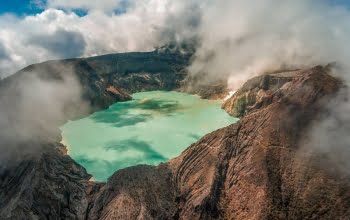
Ijen volcano tour 2 day 1 night from Banyuwangi airport
Ijen tour from Banyuwangi 2 Day 1 Night Ijen tour from Banyuwangi 2 Day 1 Night | Ijen crater has sunrise and green views. Not only that, the Ijen plateau or Ijen Crater also has a blue flame/blue fire phenomenon that there are only 2 in the world. one in Iceland. to see the blue... read more
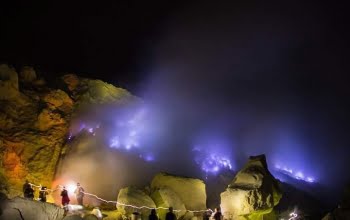
Kawah Ijen Midnight Tour From Banyuwangi | Sharing Tour
Kawah Ijen Midnight Tour From Banyuwangi – A short highlight tour for hiking Kawah Ijen by night to see the blue fire, sunrise, and sulfur mining activities. This is a shared tour package with other guests who also stay in our place at the same time and also the cheapest package which very suits backpackers on... read more
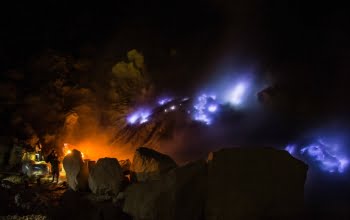
Ijen crater tour from Bali 1 Day Tour | Privat Tour
Ijen crater tour from Bali 1 Day | Ijen crater tour Ijen Crater Tour from Bali is probably one of my favorite tourism destinations for first-time visitors in Indonesia. The landscape is out of this world. One of the highlights of visiting Ijen is the blue flames, which you can only see at night. The... read more
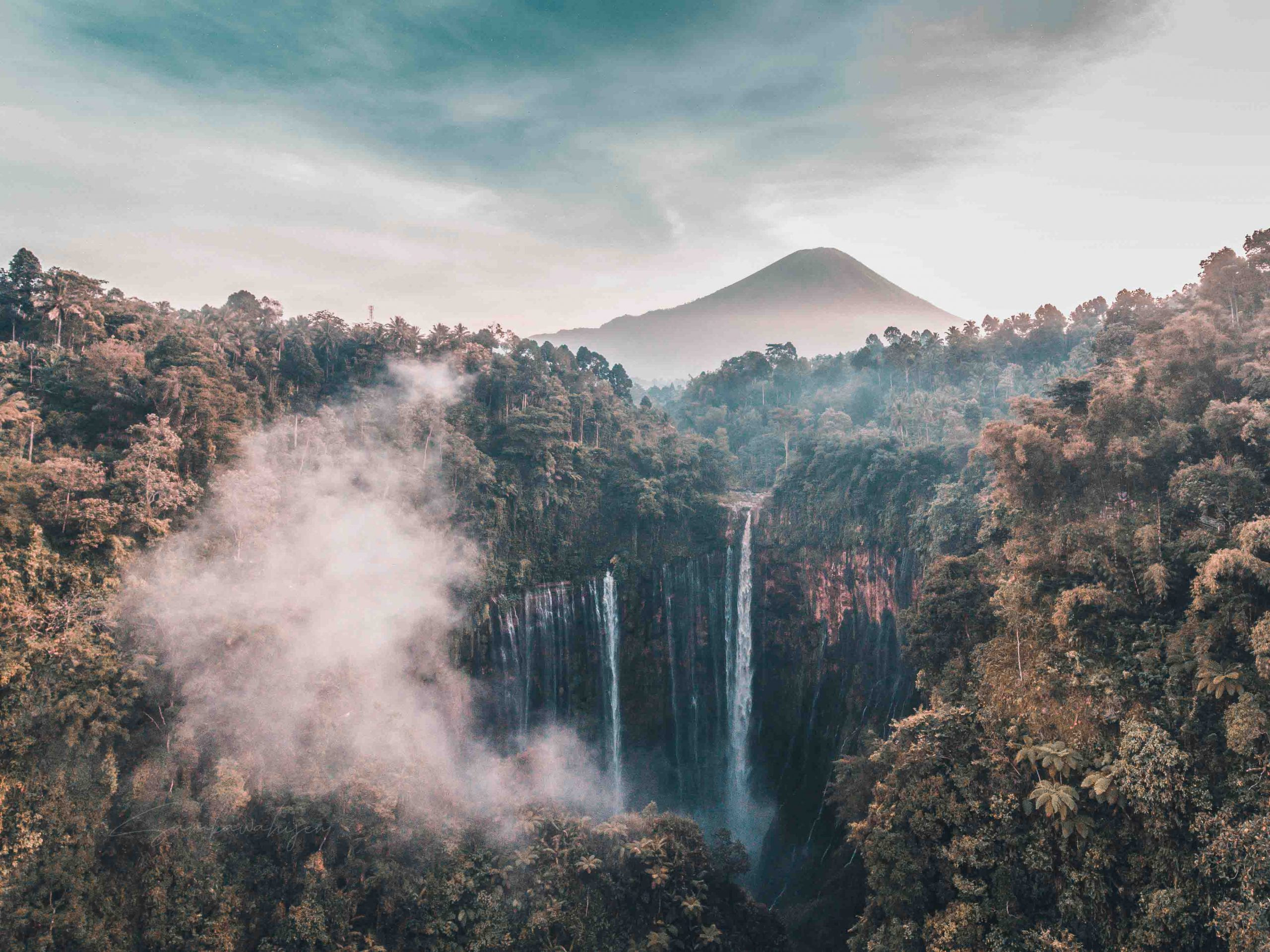
Bromo Ijen Tumpak Sewu from Bali 4D3N Back To Bali
Bromo Ijen Tumpak Sewu 3 best tourist spots in East Java, namely visiting the sunrise on Mount Bromo, the Blue Fire of Ijen Crater in Banyuwangi, and Tumpak Sewu waterfall in Lumajang. The tour package program starts with a pick-up in Surabaya or Bali Here is the Itinerary of the Tour Packages for Mount Bromo... read more
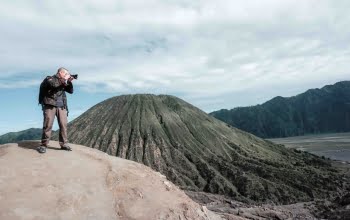
Bromo Ijen Crater tour from malang Finish Ketapang Harbor
Bromo Ijen Blue fire Tour 3 day 2 Night Tour Package is one of the Mount Bromo tour package options that consists of three popular tourist objects in Java Island Indonesia. These tourism objects offer amazing landscapes from all sides. If you are interested to enjoy Ijen Crater trekking, Mount Bromo and Madakaripura Waterfall tour package has a duratio... read more

Mount Bromo Ijen Tour From Surabaya 3 Day 2 Night ( 2025 )
Mount Bromo Ijen Tour: The Mount Bromo and Ijen tour package is one of the most captivating travel experiences in East Java, showcasing the raw beauty of Indonesia’s volcanic landscapes. This adventure is perfect for anyone seeking a meaningful holiday, whether you’re travelling with family, friends, a group, or solo. The spectacular sunrise over Mou... read more
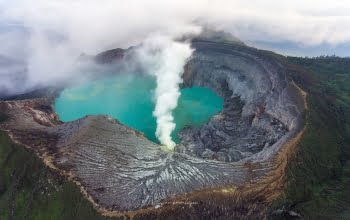
Kawah Ijen Volcano tour 1 day from Banyuwangi
Kawah Ijen Volcano tour 1 day from Banyuwangi Kawah Ijen Volcano tour 1 day from Banyuwangi – is one of the challenging adventure activities that can be an option to add a beautiful impression at holiday time. Climb to the crater of Ijen is very different from climbing in other areas. Here, the tourists will... read more

Mount Ijen Blue Fire Tour From Banyuwangi 1 Day Tour
Mount Ijen Blue Fire Tour From Banyuwangi 1-Day Tour Mount Ijen Blue Fire Tour From Banyuwangi 1 Day Trip – is one of the challenging adventure activities that can be an option to add a beautiful impression during holiday time. Climbing to the crater of Ijen is very different from climbing in other areas. Here,... read more
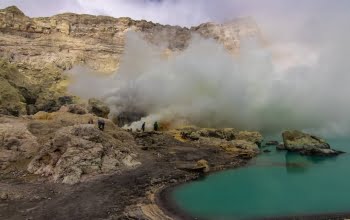
Ijen crater tour from surabaya 2 Day 1 night | Finish Bali
Ijen Crater Tour From Surabaya 2 Day 1 Night. The trip will start from your hotel in Surabaya or Juanda International Airport between read more
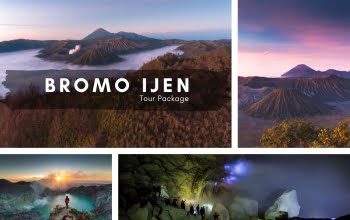
Bromo Ijen Tour package From Bali 3 Day 2 Night
Bromo Ijen Tour Package from Bali 3 Day 2 Night Bromo Ijen tour package is one of the best destinations in eastern Java that offers natural attractions centred on natural beauty. The beauty of tourism is that it can provide its value of happiness for holidays with family members, friends, groups, or individuals. Holidays to... read more
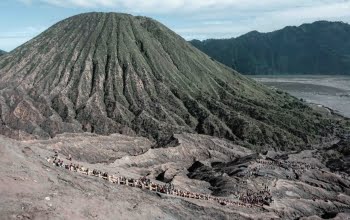
Bromo Midnight Tour From Surabaya | Privat Tour
Bromo Midnight Tour From Surabaya | Privat Tour read more

Surabaya Bromo Ijen Tour Drop off Bali 3 Day 2 Night
Bromo Ijen Tour Package From Surabaya | The trip starts from Surabaya and finishes in Bali with a duration of 3 Days 2 Nights Tour, Discover Mount Bromo Sunrise, Ijen Crater Blue Fire Tour, and other interesting tourism object as Waterfall and Plantation at Banyuwangi East Java Indonesia. If you have enough time you will... read more

Mount Bromo – Ijen Blue Fire Tour 3 Day From Surabaya
Mount Bromo Ijen Blue Fire Tour Package From Surabaya – The trip start in Surabaya and finish in Surabaya with a duration of 3 Days 2 Nights Tour, Discover Mount Bromo Sunrise, Ijen Crater Blue Fire Tour, and other interesting tourist object as Waterfall and Plantation at Banyuwangi East Java Indonesia. If you have enough... read more
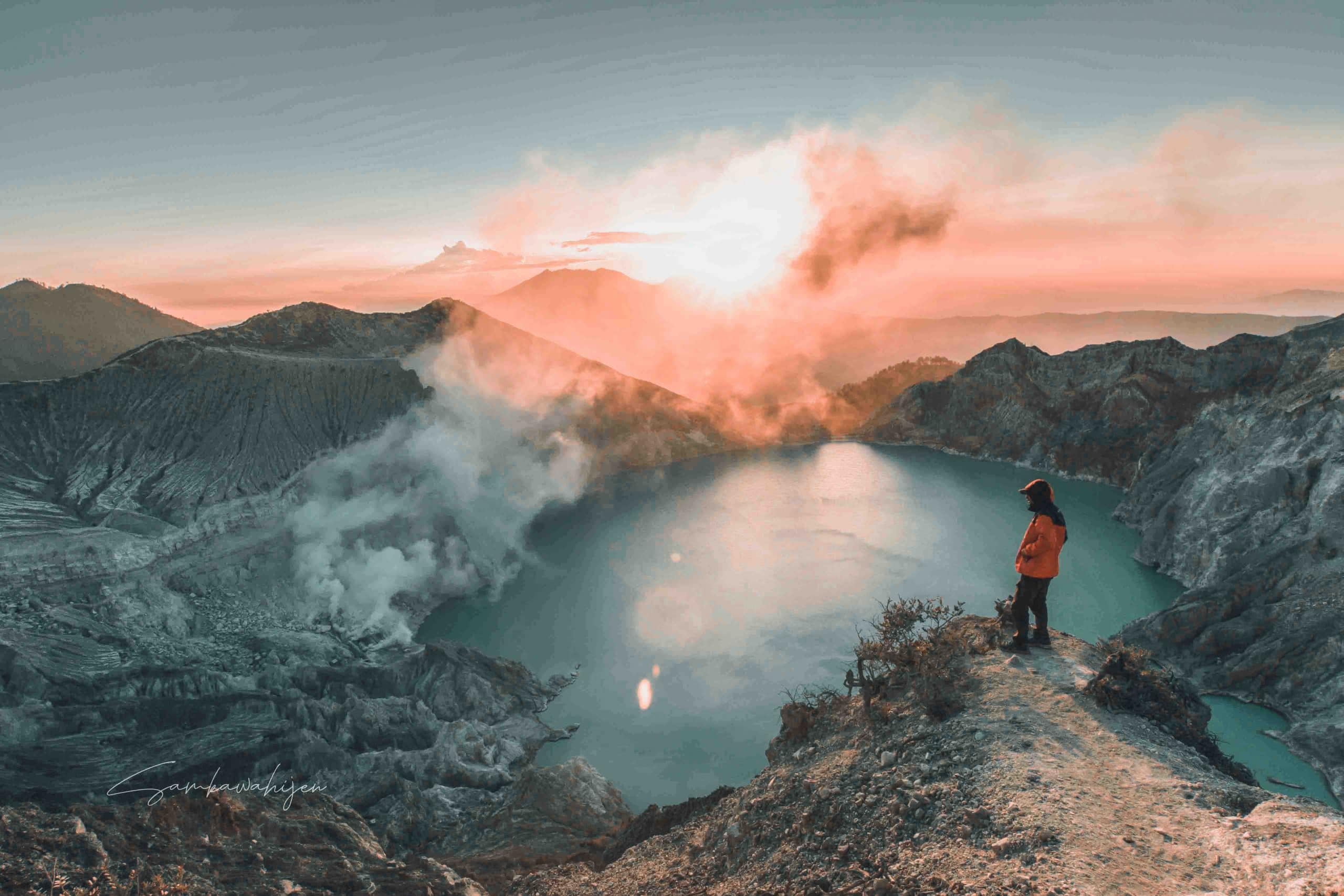
Ijen Blue Fire Tour: 1 Day tour from Bali
Ijen Blue Fire Tour 1 Day 1 Night From Bali Ijen Blue Fire Tour 1 Day 1 Night From Bali is the best choice if you decide to start this Trip from Bali (or Ketapang). Located only one hour away from the ferry harbour connecting Bali, Kawah Ijen is a composite volcano offering one of... read more
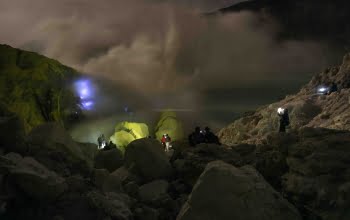
Ijen crater tour | Ijen volcano tour | Kawah Ijen Tour
Ijen crater tour | Ijen Crater is one of the popular tourist sites located within the borders of Banyuwangi and Bondowoso regencies in East Java. Having more than two thousand visitors every month, Ijen Crater becomes a tourist attraction that makes many people curious. This is a must see if you are in the area... read more

Booking Tiket Kawah Ijen dan Syarat Pendakian Terbaru 2024
Booking Tiket Kawah Ijen Online Kawah Ijen merupakan salah satu destinasi wisata alam terpopuler di Indonesia. Kawah vulkanik aktif ini terkenal dengan fenomena blue fire-nya yang menakjubkan. Untuk dapat menikmati keindahan blue fire, wisatawan harus melakukan pendakian ke puncak Kawah Ijen. Pada tanggal 6 Januari 2024, Balai Konservasi Sumber Daya Alam (BK... read more

Explore Ijen Crater: Witnessing the Blue Flames of Java
Ijen Crater is a natural wonder located in East Java, Indonesia. It is a large, active volcano with a turquoise lake at its centre. The lake is home to a unique phenomenon called blue fire, which is caused by the combustion of sulfuric gases. The hike to the top of Ijen Crater is a challenging... read more
Contact Us
If you have any questions, please contact us.
-
Hotline
+6285748711646 -
Whatsapp
085748711646 -
Email
admin@ijenexpedition.com

